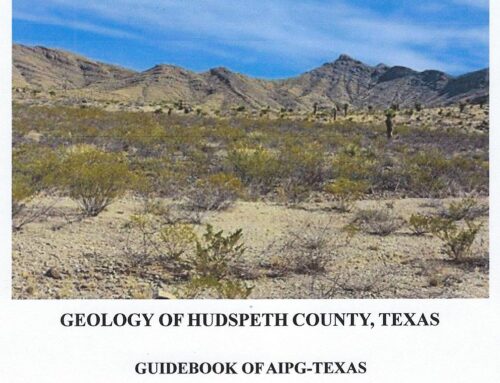Edith Newton Wilson, President of the Energy Minerals Division of AAPG, asked: A Revolution? What’s in a name? Should we call it a transition? A convergence? A transformation? A revolution? A tipping point? A paradigm shift? Consider that perhaps the name is largely irrelevant, except to sell conference tickets. There’s a radical shift afoot that affects the business model for global energy delivery and consumption. And with it comes with a wealth of opportunities for energy geoscientists, as well as an obligation for every professional society to help its members prepare for the future.
It’s Our Job Whether it’s sequestered in hydrocarbon molecules for millions of years or converted by silicon to electricity or stored for the short term using inherent and enhanced properties of metals – it’s all energy for our consumption that is ultimately sourced from the sun. Still, every resource used to build the energy supply chain comes from the ground. That’s where we shine as energy geoscientists.
We’ve spent the last century ensuring access to affordable, reliable, sustainable and modern energy for all. We love this business, and we intend to spend the next hundred years accomplishing the same goal. We’ll get to engage in new frontiers and embrace the improved efficiency and economics that accompany the energy technology explosion. The hometown of AAPG, Tulsa, OK, bears the tag line, “A New Kind of Energy.” Solar and battery businesses are booming, and soon northeastern Oklahoma will be home to the densest electric vehicle charging network in the nation. According to the latest briefing from the University of Texas Energy Institute, Texas is positioned to lead in the use of geothermal for baseload power supply.
News stories cross our desks daily that highlight innovative renewable energy projects, advances in material science for energy storage, sustainability in the use of critical minerals and global proliferation of livable cities.
AAPG hosted two thought-provoking Energy Transition Forums this fall – one in Edinburgh, Scotland, and one in Cartagena, Colombia. At both events, traditional energy providers met with students, utility executives, researchers, academics and renewable energy professionals. We began the conversation of how we can translate what we do so well – finding the materials needed to deliver energy and getting them to market efficiently – to the new economy.
For the first time in the 25 years I’ve been an AAPG member, I was the oldest person in the room at the Encuentro de Sostenibilidad y Energf a at Hotel Las Americas, where students and young professionals flocked to the Latin America and Caribbean Region’s inaugural event. LACR has also created a funding contest for projects in sustainable energy development that is designed with these young scientists in mind. Global expansion of this riff on the successful Imperial Barrel Award concept would help us to grow and retain members, as students look to experienced professionals for leadership in a changing world.
For the rest of the article, see (more).
For more on the issues surrounding solar and wind energy, see:
http://web.i2massociates.com/search_resource.php?search_value=renewable+energy+issues#page=1
For information on nuclear energy, see:
http://web.i2massociates.com/search_resource.php?search_value=nuclear+power+industry#page=1






